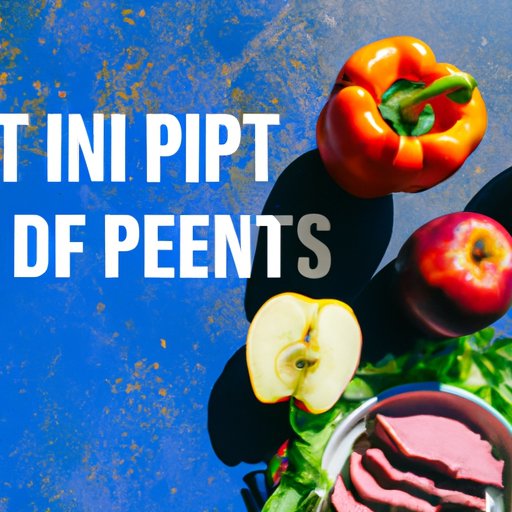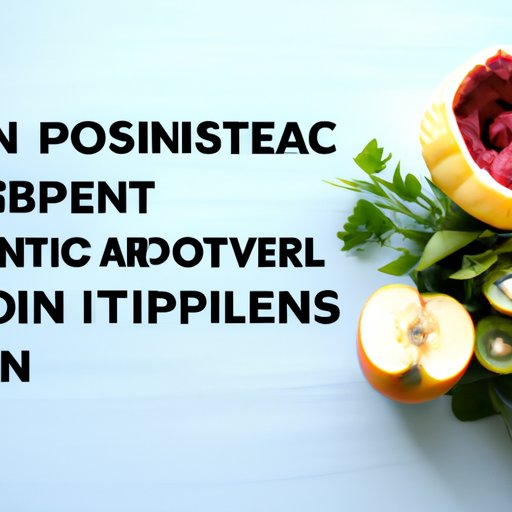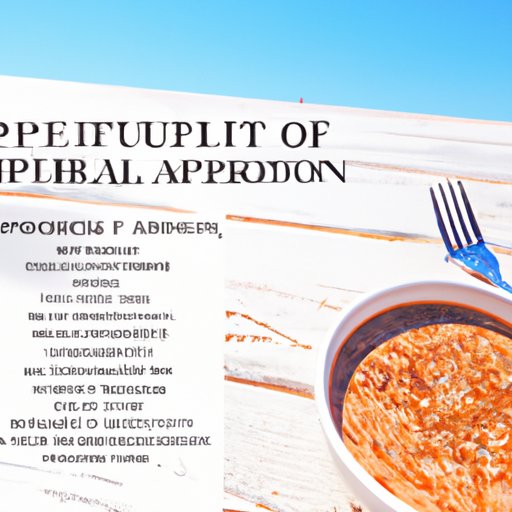Introduction
The Autoimmune Protocol (AIP) diet is becoming increasingly popular as a way to improve overall health and address autoimmune conditions. But what is the AIP diet? In this article, we’ll explore the basics of the AIP diet, its potential benefits, and how to get started on your journey.

Comprehensive Guide to the AIP Diet: What It Is and How to Follow It
The AIP diet is a nutritional approach designed to reduce inflammation in the body and address autoimmune conditions. It is based on the idea that many modern diseases are caused by systemic inflammation, which can be addressed through dietary changes. The AIP diet eliminates certain foods that are known to cause inflammation, such as processed foods, dairy products, grains, legumes, and nightshade vegetables.
Overview of the AIP Diet
The AIP diet is based on the Paleo diet, but it is much stricter. While the Paleo diet focuses on eating whole, unprocessed foods, the AIP diet takes it a step further by eliminating food groups that are known to cause inflammation. It is designed to give your body time to heal from inflammation and autoimmune conditions.
Benefits of the AIP Diet
The AIP diet has been shown to have numerous potential benefits, including improved digestive function, reduced inflammation, and improved immune system function. In addition, following the AIP diet may help improve energy levels, reduce pain, and improve overall well-being.
Guidelines for Following the AIP Diet
If you’re interested in trying the AIP diet, there are a few guidelines to keep in mind. Most importantly, focus on eating whole, unprocessed foods. This includes fresh fruits and vegetables, quality proteins, healthy fats, and fermented foods. Avoid processed foods, dairy products, grains, legumes, and nightshade vegetables. Be sure to also pay attention to food quality and listen to your body when making food choices.
Pros and Cons of Following an AIP Diet
Pros of Following an AIP Diet
There are many potential benefits to following an AIP diet. As mentioned above, it may help reduce inflammation, improve digestive function, and boost your overall health. Additionally, it can provide structure and guidance for those who are overwhelmed by the thought of making healthy dietary changes.
Cons of Following an AIP Diet
On the other hand, there are some drawbacks to following an AIP diet. It can be difficult to follow due to the strict guidelines, and it may be challenging to find compliant foods if you’re eating out or traveling. Additionally, it may be expensive to purchase high-quality, organic foods. Finally, it may take some time to adjust to the new diet, so be patient with yourself during the transition.
Beginner’s Guide to the AIP Diet: What to Eat and Avoid
Foods to Include in an AIP Diet
When following the AIP diet, there are some foods that you should include in your diet. Focus on eating fresh fruits and vegetables, quality proteins, healthy fats, and fermented foods. Some examples include grass-fed beef, wild-caught fish, avocados, coconut oil, and sauerkraut.
Foods to Avoid in an AIP Diet
In addition to focusing on eating certain foods, there are also some foods that should be avoided on the AIP diet. This includes processed foods, dairy products, grains, legumes, and nightshade vegetables. Additionally, it’s important to avoid foods that contain added sugars, artificial sweeteners, and preservatives.

Benefits of Eating an AIP Diet for Digestive Health
Improved Digestive Function
One of the main benefits of the AIP diet is improved digestive function. By eliminating inflammatory foods, you can reduce inflammation in the gut and improve digestion. This can lead to increased nutrient absorption, which can improve overall health. Additionally, it may help reduce symptoms of digestive issues such as bloating, gas, and constipation.
Reduced Inflammation
In addition to improved digestive function, the AIP diet may also help reduce inflammation in the body. Studies suggest that the AIP diet can reduce inflammation markers in the body, which can lead to improved overall health. Additionally, it may help reduce symptoms of autoimmune conditions such as rheumatoid arthritis and lupus.
AIP Diet Recipes to Get You Started on Your Journey
Breakfast Recipes
Starting the day off with a nutritious breakfast is key for staying energized throughout the day. Here are a few AIP-friendly breakfast recipes to get you started:
- Egg Muffins with Spinach and Mushrooms
- Banana Coconut Porridge
- Avocado Breakfast Bowl
- Sweet Potato Hash Browns
Lunch Recipes
For lunch, try one of these delicious AIP-friendly recipes:
- Thai Zucchini Noodle Salad
- Carrot Ginger Soup
- Coconut Curry Chicken
- Mushroom and Sweet Potato Stew
Dinner Recipes
End your day with one of these tasty AIP dinner recipes:
- Salmon with Roasted Brussels Sprouts
- Grilled Pork Chops with Apples
- Beef and Broccoli Stir Fry
- Stuffed Eggplant with Garlic and Herbs
Common Mistakes to Avoid When Starting an AIP Diet
Not Paying Attention to Food Quality
It’s important to pay attention to food quality when following the AIP diet. Aim to eat organic, grass-fed, and non-GMO foods whenever possible. This will ensure that you’re getting the highest quality nutrients and avoiding any potential toxins.
Eating Too Much or Too Little
Another mistake to avoid when starting an AIP diet is eating too much or too little. Be sure to listen to your body and adjust your portion sizes accordingly. Additionally, make sure you’re taking in adequate calories to fuel your body and support your activity level.
Ignoring the Social Aspect of Eating
Finally, don’t forget to enjoy the social aspect of eating. It’s important to connect with friends and family over meals, even if it means having to make adjustments to your diet. Don’t let the AIP diet become an isolating experience.

The Science Behind the AIP Diet: How It Works and Its Potential Benefits
How the AIP Diet Works
The AIP diet works by eliminating inflammatory foods and replacing them with nutrient-dense, anti-inflammatory foods. This can help reduce inflammation in the body and improve digestive function. Additionally, the AIP diet encourages consumption of healthy fats, which can help nourish the cells and provide sustained energy.
Potential Benefits of the AIP Diet
Studies suggest that the AIP diet may have numerous potential benefits, including improved digestive function, reduced inflammation, and improved immune system function. Additionally, it may help reduce symptoms of autoimmune conditions such as rheumatoid arthritis and lupus. However, more research is needed to confirm these potential benefits.
Conclusion
Summary of the AIP Diet
The AIP diet is a nutrition approach designed to reduce inflammation in the body and address autoimmune conditions. It is based on the Paleo diet, but it is much stricter, eliminating certain foods that are known to cause inflammation. Some potential benefits of the AIP diet include improved digestive function, reduced inflammation, and improved immune system function.
Final Thoughts
The AIP diet can be an effective way to improve overall health and address autoimmune conditions. If you’re interested in giving it a try, be sure to pay attention to food quality, listen to your body, and enjoy the social aspect of eating. With the right approach, the AIP diet can be a helpful tool in your journey towards better health.
(Note: Is this article not meeting your expectations? Do you have knowledge or insights to share? Unlock new opportunities and expand your reach by joining our authors team. Click Registration to join us and share your expertise with our readers.)
